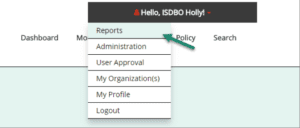What is Maintenance of Effort (MOE)?
Maintenance of effort (MOE) is a requirement for intermediate school districts (ISD) receiving IDEA funds. The ISD must budget and spend at least the same amount of local — or state and local — funds for the education of children with disabilities on a year-to-year basis.
What is the difference between MOE Eligibility and MOE Compliance?
MOE Eligibility or the “eligibility standard” refers to the appropriate budgeting of funds under IDEA Part B requirements. In advance of the fiscal year, ISDs must show that they intend to spend as much or more local and state funds for the education of children with disabilities than they spent in the most recent fiscal year for which data is available. If an ISD budgets a lesser amount for the upcoming year, they will have an opportunity to justify their lower budgeted amount through allowable exceptions and adjustments (see below).
MOE Compliance or the “compliance standard” refers to the actual spending of funds. After the close of a school year, ISDs must demonstrate they spent an amount equal to or more local and state funds for the education of children with disabilities than the prior year. If an ISD spends a smaller amount than the prior year, they will have an opportunity to justify their lower budgeted amount through allowable exceptions and adjustments (see below).
What are the four methods used to test MOE?
Each method represents a different way to calculate MOE and compare fiscal effort from year to year. The four methods are:
Method 1: Total amount of local funds
Method 2: Total amount of state and local funds
Method 3: Per capita (e.g., per child with disability) amount of local funds
Method 4: Per capita amount of state and local funds
MOE thresholds and fiscal effort are always compared on a per-method basis. For example, during the MOE Compliance test, the fiscal effort calculated using Method 1 is compared with the Method 1 threshold in the previous MOE Compliance test; Method 2 fiscal effort is always compared with the Method 2 threshold, and so on. ISDs must pass using at least one method in order to meet the MOE Eligibility and MOE Compliance standards.
Are MOE standards applied at the district level or the intermediate school (ISD) district level?
MOE standards are applied at the ISD level. Raw data for all districts is aggregated to the ISD level for the purposes of MOE. The required thresholds (from the comparison year), exceptions, and 50 percent adjustment are all applied at the ISD level.
The raw data for member districts includes headcount, SE-4096, and SE-4094 information. This information is available on the Reports page in Catamaran. To access this report, hover your mouse on your name in the top right corner and choose Reports from the dropdown menu. Then, choose MOE Compliance District Data Report or MOE Eligibility Data by District.

If MOE standards are applied at the ISD level, do districts have a role in MOE?
Yes. For MOE Eligibility, districts participate directly by providing budget estimates in Catamaran of their SE-4094 and SE-4096 expenditures for the upcoming school year. These figures are then aggregated to the ISD level for the purposes of testing the MOE Eligibility standard. If the ISD does not pass MOE Eligibility using this information alone, ISDs may contact their member districts to collect exception and adjustment information.
For MOE Compliance, districts do not have a direct role in Catamaran. However, districts do submit SE-4094 and SE-4096 data to the Financial Information Database (FID), which MDE then uses for the MOE Compliance test in Catamaran. If the ISD does not pass MOE Compliance using this information alone, ISDs may reach out to their member districts to collect exception and adjustment information.
How are the threshold amounts determined?
Four different thresholds—one for each method of calculating MOE—are established every year during the MOE Compliance test. In the 2011–12 year, expenditure data was used to create a baseline threshold for each method. Each subsequent year, new thresholds for each method are established in the MOE Compliance, and they are established in one of three ways.
- If a threshold for a particular method was met without exceptions, the new threshold for that method is equal to the fiscal effort expended in the test year.
- If a threshold was met with exceptions, the new threshold for that method is equal to the fiscal effort expended in the test year, less any approved exceptions and adjustments.
- If a threshold for a particular method was not met, the threshold for that method remains the same.
The MOE Compliance Test draws upon the results of the MOE Compliance Test for the prior year. Thresholds are based upon the last year MOE was met for each method and take into account any exceptions that were approved in intervening years (Subsequent Years Rule).
When will MOE Eligibility and MOE Compliance testing take place?
MOE Eligibility testing takes place in June when the special education flow through and preschool applications are available. This information should be submitted at the time of the ISD’s application for review. MOE Eligibility testing is conducted in advance of the upcoming school year. For example, the MOE Eligibility test for the 2019–20 school year takes place in June 2019.
MOE Compliance testing takes place in spring—around March—each year, following completion of the SE-4096 and SE-4094 cost report review by the Michigan Department of Education (MDE). These cost reports are used for the MOE Compliance Test. Therefore, MOE Compliance testing is conducted in the spring following the close of the testing year. For example, the 2018–19 MOE Compliance test takes place in March of 2020.
What happens if my ISD doesn’t pass the MOE Eligibility test?
If an ISD does not pass MOE Eligibility with the data submitted by local districts, they are required to submit exceptions and/or adjustments to justify the shortfall between their budgeted expenditures and the threshold. If the ISD, after submitting all allowable exception and adjustment data, still does not pass MOE Eligibility, the ISD is deemed ineligible to receive Part B IDEA funds in the upcoming school year.
There are no funds recaptured related to the Eligibility test.
What happens if my ISD doesn’t pass the MOE Compliance test?
If an ISD does not pass MOE Compliance with the expenditure data supplied by local districts via the FID, they are required to submit exceptions and/or adjustments to justify the shortfall between their actual expenditures and the threshold. If the ISD, after submitting all allowable exception and adjustment data, still does not pass MOE Compliance, MDE requires that the amount of the shortfall or the Part B grant, whichever is lower, be repaid back to the MDE from State or Local funds. MDE is required to return this amount to the Federal Government.
Can the ISD submit exceptions for past years?
Yes. ISDs will always be able to go back as far as the year following the last year the threshold was met for a particular method. The last year the threshold was met is called the “comparison year” for that method. (Note: an ISD may have different comparison years for the different methods.) ISDs are permitted to submit allowable exceptions that would have applied during those years. ISDs cannot submit exceptions for the last year that MOE was met for all four methods, or any year preceding that year.
What are allowable exceptions to MOE?
An ISD may reduce its MOE obligation for budgeting or expenditures if there is an allowable exception. Allowable exceptions are those due to (a) voluntary departure or departure for just cause of special education staff, (b) decrease in enrollment of children with disabilities, (c) termination of an exceptionally costly program for a particular child with a disability, under certain circumstances, (d) termination of costly expenditures for long-term purchases (see 34 CFR §300.204).
An ISD may reduce its MOE Eligibility budget for the education of children with disabilities if it anticipates an allowable exception in the upcoming school year, such as the expected retirement of a staff member. However, by reducing its budget in anticipation of an allowable exception later in the year, an ISD puts itself at risk of budgeting less than it will ultimately need to meet MOE, should the expected exception not occur.
How did the MDE’s MOE Compliance methodology change in the 2017–18 test?
MOE Compliance data is now aggregated at the ISD level and includes all member districts, including public school academies (PSA), in the aggregate calculation. In prior years, the MOE Compliance aggregation only included member districts and PSAs that received an IDEA Part B flowthrough and/or preschool distribution from their ISD.
Is Part C Maintenance of Effort in Catamaran?
Not at this time. The MDE Office of Great Start currently manages Part C MOE.

